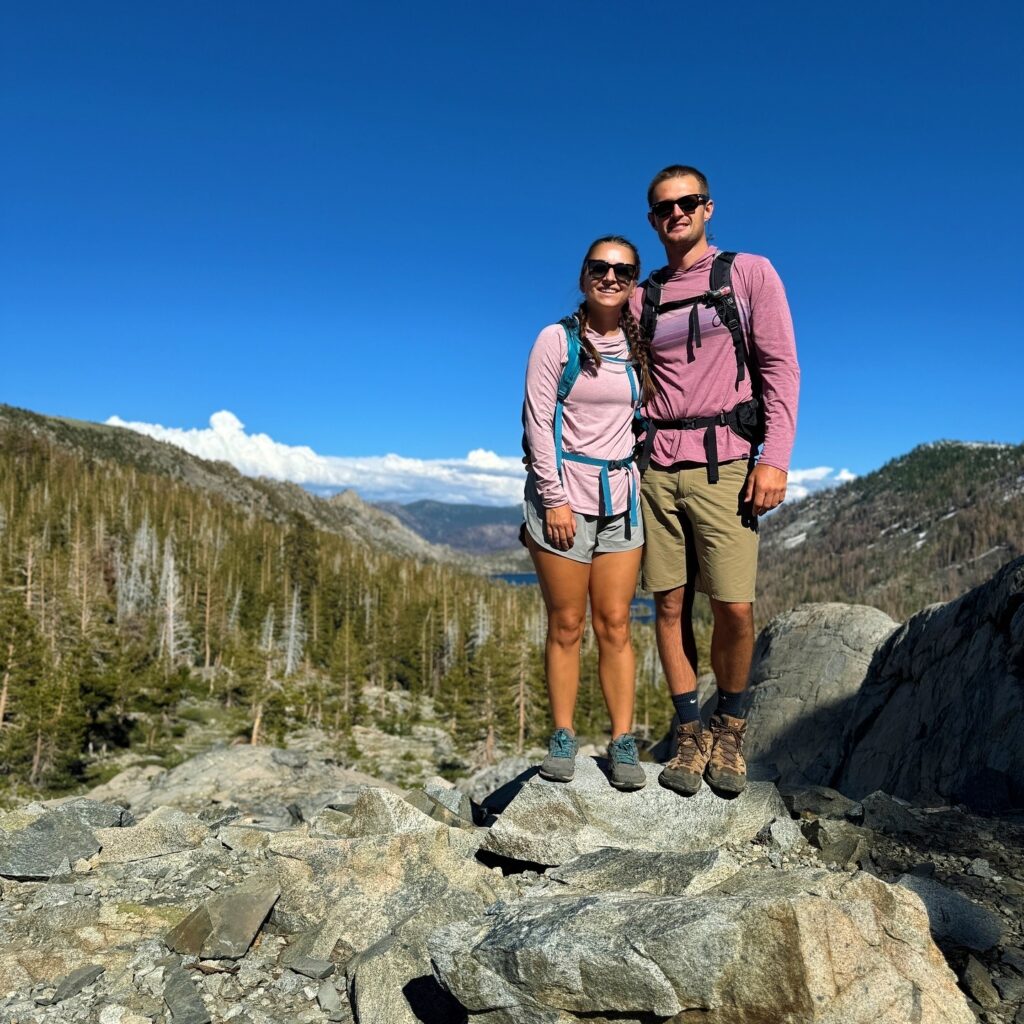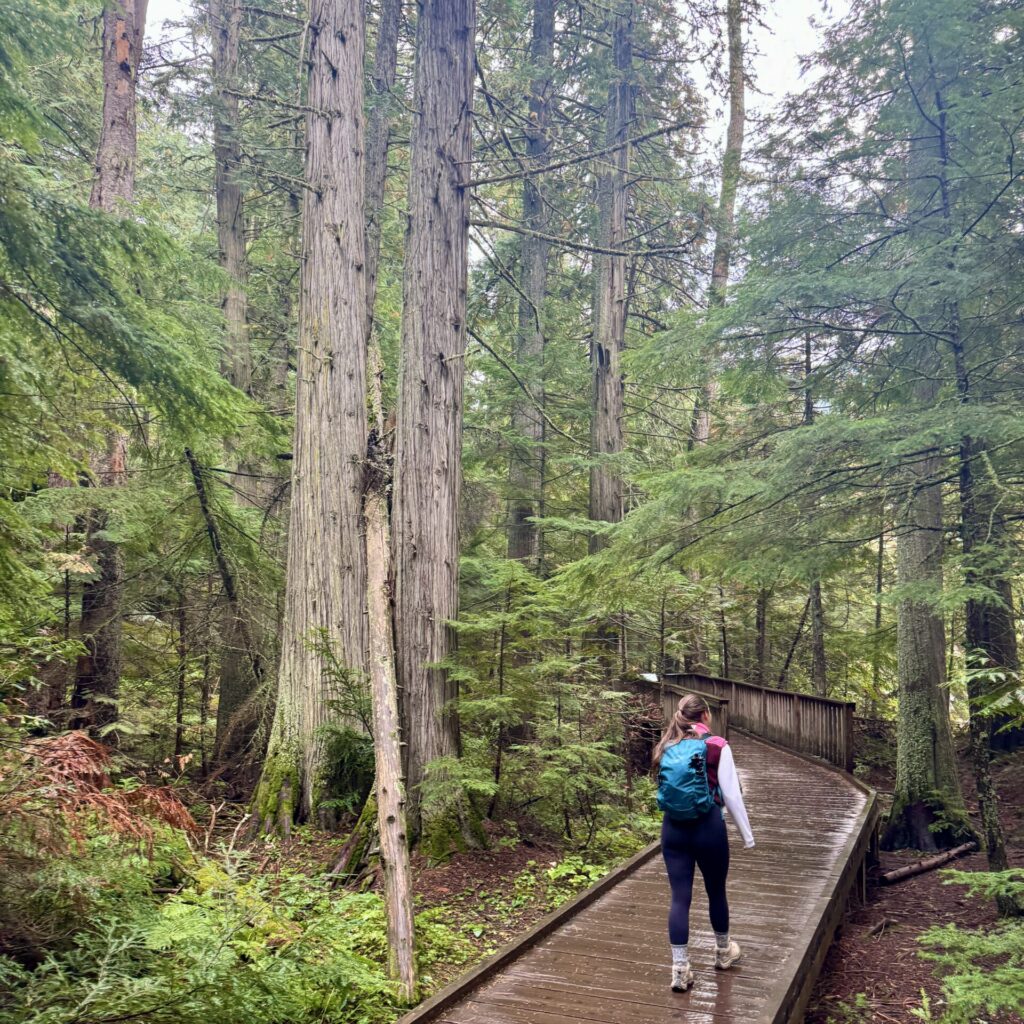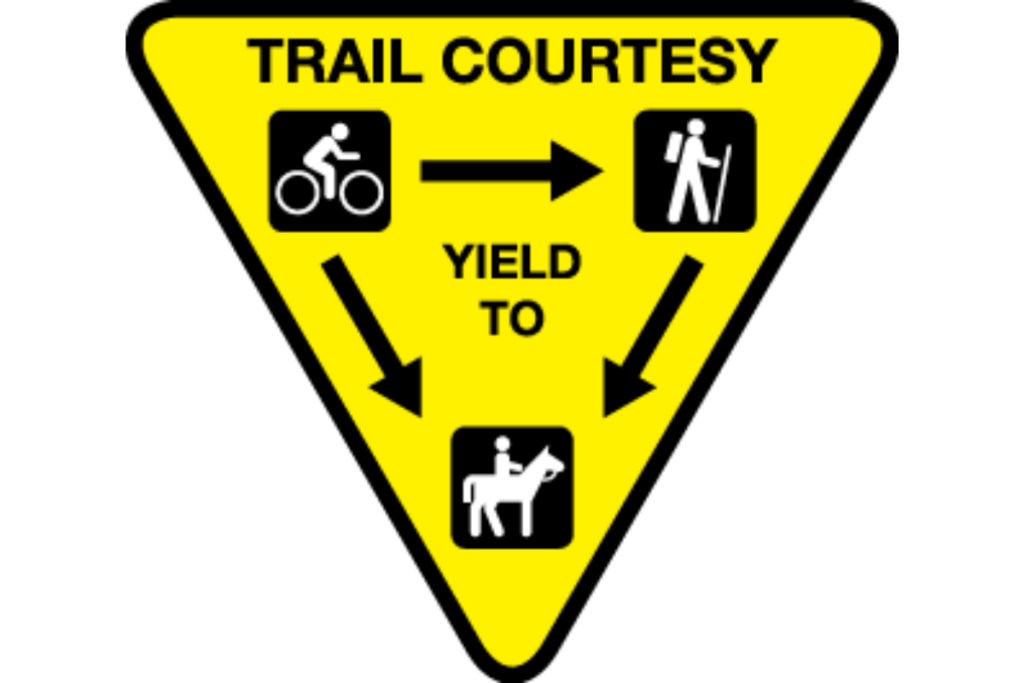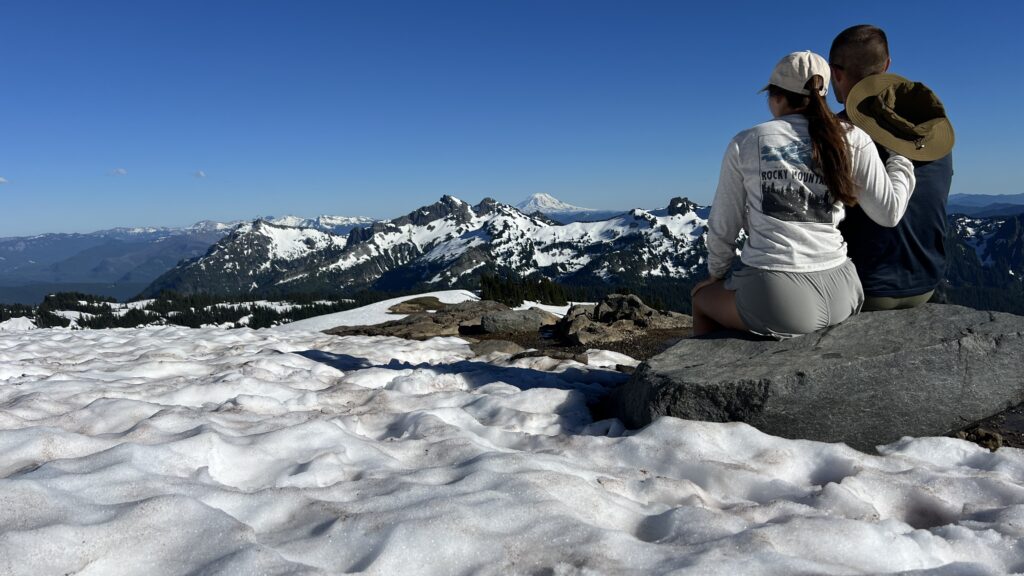Hiking in national parks offers a unique chance to connect with nature, enjoy scenic views, and experience a sense of adventure. If you’re new to hiking or planning your first hiking in national parks trip, it can be a bit overwhelming. But don’t worry! This beginner’s guide will help you understand the basics of hiking in national parks, from choosing the right trails to packing the right gear and practicing safe trail etiquette. Whether you’re looking for accessible trails or planning a more challenging adventure, this guide has you covered.

1. Understanding Trails While Hiking in National Parks
One of the first things you’ll encounter when hiking in national parks is a variety of trails, each offering a unique experience. It’s essential to know how to choose the right one based on your fitness level, interests, and experience.
Trail Difficulty Levels
Trails are usually classified by difficulty: easy, moderate, and difficult. For beginners, start with easy trails that offer short distances and minimal elevation gain. These are usually accessible to most fitness levels. Moderate trails may include some elevation changes or longer distances, while difficult trails often involve significant elevation gain, rugged terrain, or longer hiking durations.
Accessible Trails
Many national parks offer accessible trails designed for individuals with mobility challenges or families with young children. These trails are usually paved or made of smooth, compact dirt, making them suitable for wheelchairs, strollers, or anyone who needs a more even surface. Look for these trails on park websites or apps like AllTrails, which makes it easy to filter trails based on accessibility.
Using AllTrails to Find Your Ideal Trail
AllTrails is a fantastic tool for finding hiking in national parks. You can filter trails by difficulty, trail type (loop, out-and-back, point-to-point), and even specific features like waterfalls, scenic views, or wildlife sightings. AllTrails also provides reviews from other hikers, which can help you understand trail conditions and what to expect. It’s a great resource to ensure you’re prepared and choose a trail that suits your needs. Use this link to bundle Alltrails+ with the America the Beautiful Annual Park pass for 15% off.
Trail Markings & Navigation
Once you’re on the trail, it’s important to stay on the marked path. Trails in national parks are often well-marked with signs or blazes, but it’s always good to have a map or an app like AllTrails to ensure you’re on the right track. Some parks also offer downloadable maps or guides, so be sure to check ahead of time.
2. Essential Gear for Hiking in National Parks
Packing the right gear is key to having a comfortable and safe hike. Here’s a breakdown of the essentials you’ll need.
Footwear
Proper footwear is crucial for any hike. For easy trails, comfortable sneakers or trail runners may suffice. For more rugged or rocky terrain, opt for hiking boots that offer better ankle support and traction.
Clothing
Layering is the best approach for hiking in national parks. Start with moisture-wicking base layers to keep sweat off your skin, followed by insulating layers (like fleece or down) if it’s cold. Don’t forget a waterproof jacket in case of rain.
Backpack
A small daypack is perfect for carryig your essentials: water, snacks, a first aid kit, and sunscreen. A hydration reservoir or water bottles are essential to keep you hydrated, especially on longer hikes.
Other Essentials
- Hat: Protect your face and neck from the sun.
- Sunscreen: Make sure to reapply regularly, especially in higher altitudes.
- Trekking Poles: Helpful for balance, especially on steep or uneven trails.
- Headlamp/Flashlight: A must if you’re hiking early in the morning or late in the day.
3. Preparing for Your Hike
Proper preparation ensures you have a smooth, enjoyable hike.
Research the Park and Trail
Before you go, research your chosen trail on resources like AllTrails, park websites, and hiking forums. Pay attention to the trail’s distance, difficulty, and elevation gain, and always check the weather forecast.
Physical Preparation
Even beginner hikes require stamina, especially if you’re not used to physical activity. Simple exercises like walking, stair climbing, or cycling can help prepare your body for the trail.
Packing Checklist
A checklist can ensure you don’t forget anything important. Download or create a list of essential items: water, snacks, sunscreen, first aid, and clothing layers. Double-check your gear the night before your hike.
Travel Logistics
Plan your route to the trailhead. If you’re driving, check parking availability and whether permits are required. Some national parks have limited access, especially during peak seasons, so always check ahead.
4. Safety Tips for Hiking in National Parks
Safety should be your top priority when hiking in national parks.

Staying on Marked Trails
Always stay on marked trails to avoid getting lost or damaging the environment. Many parks have delicate ecosystems that need protection, so follow designated paths.
Wildlife Awareness
National parks are home to wildlife, including bears, snakes, and mountain lions. Learn how to safely store food and snacks (bear-proof canisters are a must in certain parks) and familiarize yourself with wildlife safety tips for the area you’re visiting.
Hydration & Nutrition
Bring enough water and snacks to sustain you during the hike. Dehydration can happen quickly, especially at higher altitudes or in warm weather, so drink water regularly and snack when needed. Highly recommend bringing some electrolytes, like LiquidIV to keep you feeling your best on the trail.
Weather Awareness
Weather can change rapidly in the mountains or forests. Check the forecast before heading out and be prepared for sudden shifts. Carry layers to stay warm and a rain jacket in case of storms.
Leave No Trace
Adopt Leave No Trace principles: pack out everything you bring with you, avoid disturbing wildlife, and leave nature as you found it.
5. Trail Etiquette and Best Practices
Hiking etiquette helps ensure that everyone enjoys the trail and stays safe.
Who Yields to Who on the Trail?

Hikers yield to horses and bikers. If you’re hiking, step off the trail and give way to riders and bikers.
Bikers yield to horses. If you’re on a bike, be sure to stop and let riders pass.
Horses yield to no one, so always give them plenty of space and move off the trail as needed.
Respecting Other Hikers
Be courteous when passing others—let people know you’re coming by saying “on your left” or “on your right.” If the trail is narrow, step aside and let others pass.
Group Hiking Tips
When hiking with a group, keep an even pace and be mindful of your surroundings. Always stay together and check on one another, especially on longer or more challenging hikes.
Photographing Respectfully
Take photos, but be mindful not to block the trail or disturb other hikers. Stay aware of the environment and respect the natural beauty around you.
6. What to Do After Your Hike
After your hike, it’s important to take time to recover and reflect.
Stretching & Recovery

Stretch your legs, back, and arms to avoid muscle soreness. Simple stretches like lunges or hamstring stretches can help with flexibility and recovery.
Reflecting on Your Experience
Journaling, taking photos, or simply talking with your hiking partners can help you reflect on the day’s adventure. Sharing your experiences can inspire others to get outdoors.
Why Hiking in National Parks Should Be on Your Bucket List
Hiking in national parks is an incredible way to explore nature, challenge yourself, and enjoy breathtaking scenery. With the right preparation, gear, and safety knowledge, you’ll be well on your way to becoming a seasoned hiker. Whether you’re tackling a short, accessible trail or a more strenuous hike, remember that every adventure is an opportunity to learn and grow.
Looking for more tips on hiking in national parks? Check out our other blog posts all about the National Parks and hiking. Don’t forget to follow us on Instagram for more hiking inspiration, tips, and breathtaking national park photos!

